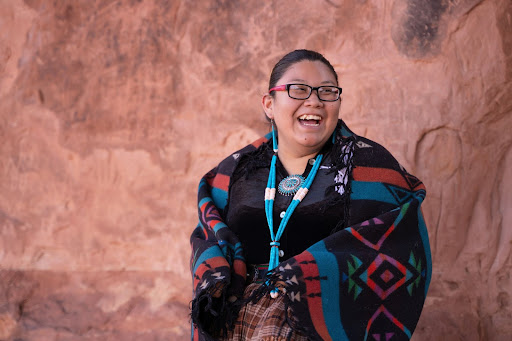
- Details
- By Leidos
The United States is home to 574 federally recognized American Indian and Alaska Native (AI/AN) tribes. These tribes can opt to receive healthcare from the Indian Health Service (IHS), an agency within the Department of Health and Human Services (HHS). In the early 2000s, the IHS lacked a robust software module in the Resource and Patient Management System for dental records. Many tribes were using paper records or other manual solutions to maintain dental records for their community members.
To provide the best solution possible for tribal dental health, the IHS sought a more robust, electronic, modernized electronic dental record (EDR) system to improve the records management for AI/AN dental record. Because tribes are sovereign nations and have unique and distinct cultural practices, the IHS also wanted a commercial off-the-shelf solution that would be flexible and responsive to varying needs and requirements.
For nearly 15 years, Leidos and partner Henry Schein One have been working with the IHS and tribes across the country to implement an EDR system and ultimately, provide more efficient dental care to thousands of American Indians and Alaska Natives.
Technical Implementation with a Commitment to Service and Respect
Leidos serves as the system integrator for this work, managing the EDR system implementation from requirements-setting, hardware and software installation, customer support, training, and system upgrades. When a tribal clinic is ready to opt-in to the EDR system, it begins by working with IHS to complete a questionnaire that helps outline the clinic’s requirements.
After IHS signs off, Leidos starts the process with a welcome call to get to know the specific clinic team and sets the EDR implementation guidelines. This call includes a review of the implementation steps, the tribe’s hardware and training needs, and a timeline for installation and launch. During the call, our team also schedules an onsite visit—this helps the Leidos team assess any additional needs a tribal clinic may have and fully understand the current state of operations. This visit also helps establish a good relationship with the tribe and demonstrates respect for culture and tradition.
Based on the onsite assessment, required hardware and software are ordered and put in place. Representatives from Leidos and Henry Schein return and take 2-3 days to install the EDR system and ensure it is properly connected to the clinic’s EHR and digital X-ray systems. Integrating these three systems—health records, dental records, and X-rays—is critical to providing a seamless experience for each tribal clinic.
The team performs an installation and acceptance test to ensure the EDR system is fully functional. After installation, a trainer provides a week of onsite training to teach the dental clinic users how to operate and maintain the EDR software. The trainer also remains onsite to ensure a successful “Live/Launch” day. Around six weeks after a clinic has launched its electronic system, trainers follow up with the local staff to provide tips or additional training. Trainers and other team members are available year-round for customer support and to implement 1-2 software upgrades a year.
Program Outcomes
By partnering with the IHS and individual tribes, the Leidos team has helped streamline operations at more than 270 tribal dental clinics. A more efficient system means each clinic can see more patients—a clinic with one dentist may be responsible for treating hundreds or thousands of patients, so the ability to treat more patients is especially meaningful in these communities. An EDR system also improves billing and streamlines reporting tribes submit to IHS and for grants.
Since the Leidos team works side-by-side with tribal leaders and members to implement the EDR system, they are also able to provide secondary and continuous training. In tribal communities, a single person may hold multiple vocational positions or be assigned a position based on the community’s need. The tribe’s pharmacist may be the primary IT person; a recent high school graduate may be appointed as a dental technician. Leidos team members often provide real-time technical training to community members who haven’t yet had the opportunity to learn certain computer skills. It’s just another example of the Leidos team’s commitment to each tribe’s success using the EDR integrated records system.
For more information, visit www.leidos.com/indian-health.
Help us defend tribal sovereignty.
At Native News Online, our mission is rooted in telling the stories that strengthen sovereignty and uplift Indigenous voices — not just at year’s end, but every single day.
Because of your generosity last year, we were able to keep our reporters on the ground in tribal communities, at national gatherings and in the halls of Congress — covering the issues that matter most to Indian Country: sovereignty, culture, education, health and economic opportunity.
That support sustained us through a tough year in 2025. Now, as we look to the year ahead, we need your help right now to ensure warrior journalism remains strong — reporting that defends tribal sovereignty, amplifies Native truth, and holds power accountable.
 The stakes couldn't be higher. Your support keeps Native voices heard, Native stories told and Native sovereignty defended.
The stakes couldn't be higher. Your support keeps Native voices heard, Native stories told and Native sovereignty defended.
Stand with Warrior Journalism today.
Levi Rickert (Potawatomi), Editor & Publisher
